
All About Astilbe : Everything You Need to Know!
Astilbes, often celebrated for their elegant and feathery plumes, are amazing perennial flowering plants that bring a burst of color and texture to shaded garden areas. Native to North America and Asia, these hardy plants thrive in moist, well-drained soils and are particularly noted for their lush, fern-like foliage. Hardy to zone 3 or 4 and resistant to deer and other garden pests. Their pollinator-loving blooms, ranging from soft pastels to vibrant reds and purples, create striking displays from late spring through summer. Astilbes are prized for their beauty, resilience and low-maintenance nature, making them a popular choice for gardeners seeking to enhance the aesthetic appeal of their landscapes with minimal effort.
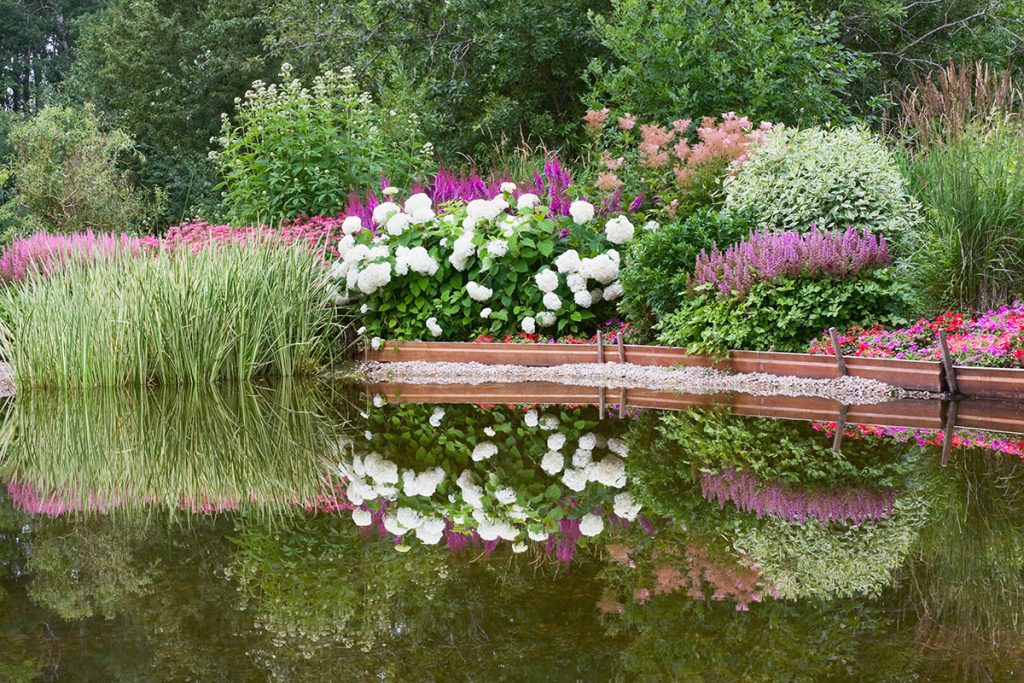

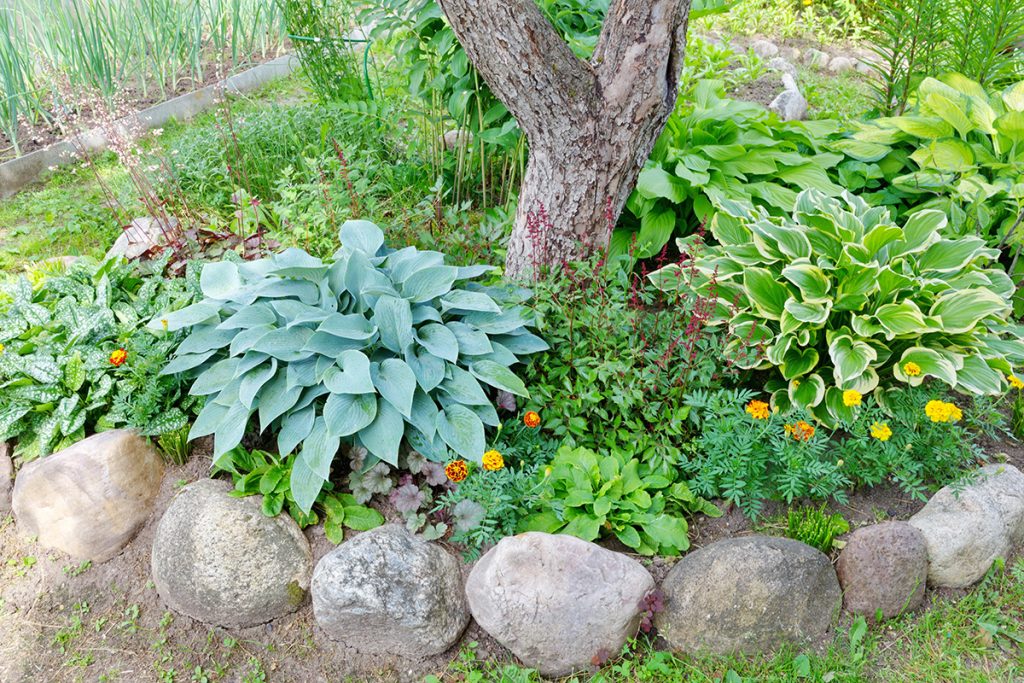
Table of Contents
Astilbe arendsii
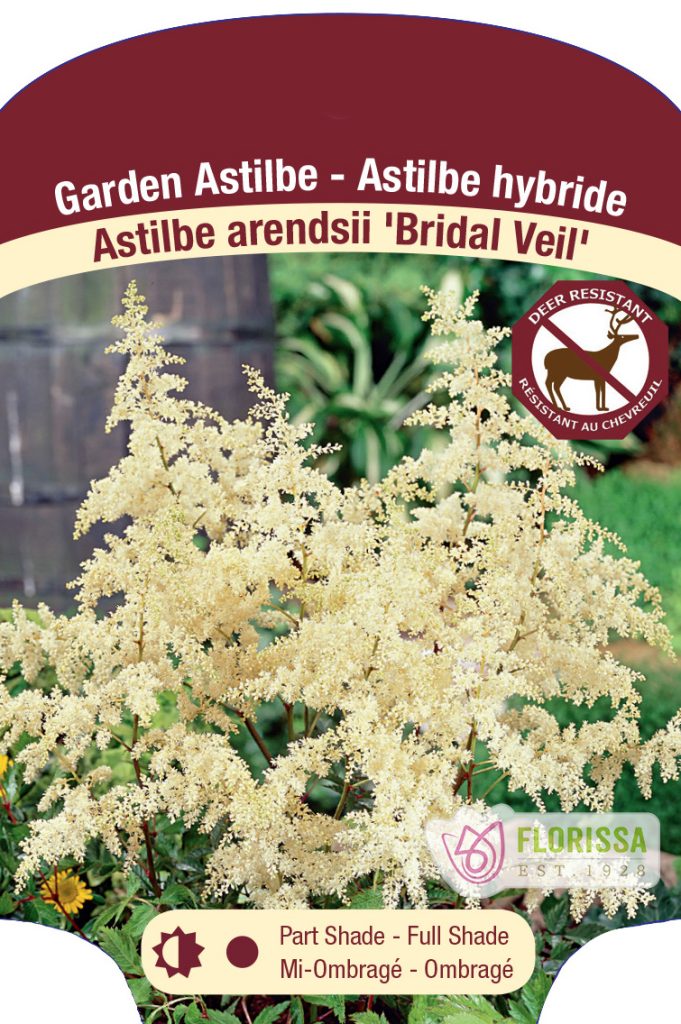

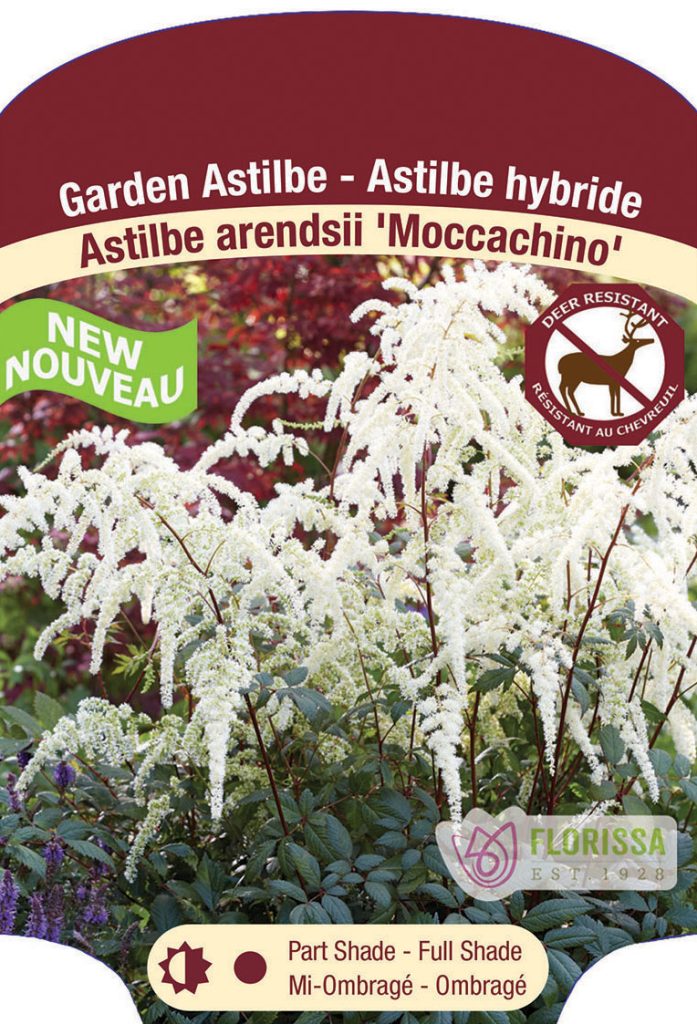
Astilbe Arendsii, a prominent member of the Astilbe genus, is renowned for its robust and vibrant presence in gardens. This hybrid group, named after the German nurseryman Georg Arends, features cultivars that boast striking, plume-like flower clusters in shades of pink, red, white, and lavender. Blooming in early to mid-summer, Astilbe arendsii plants are cherished for their lush, deeply divided foliage, which retains its beauty throughout the growing season. These perennials thrive in shaded to partially shaded locations with moist, well-drained soil, making them ideal for woodland gardens, borders, and alongside water features. Their ability to attract pollinators and resist common garden pests further enhances their appeal, ensuring that Astilbe arendsii remains a favourite among novice and experienced gardeners. A few of our favourite varieties include: Bridal Veil, Chocolate Shogun, and Moccachino.
Astilbe chinensis
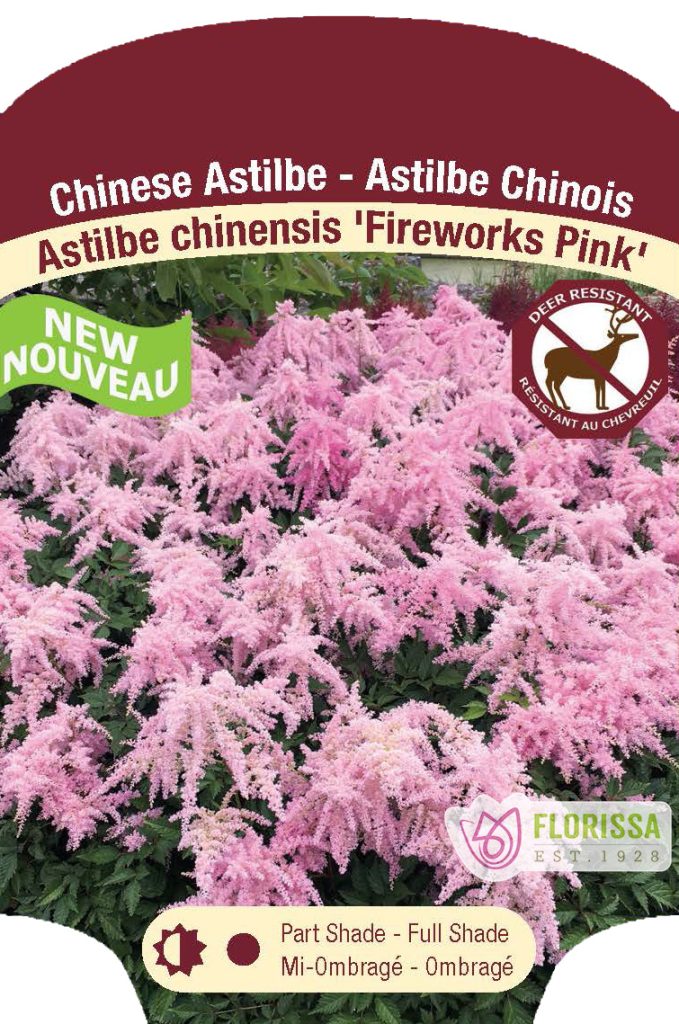
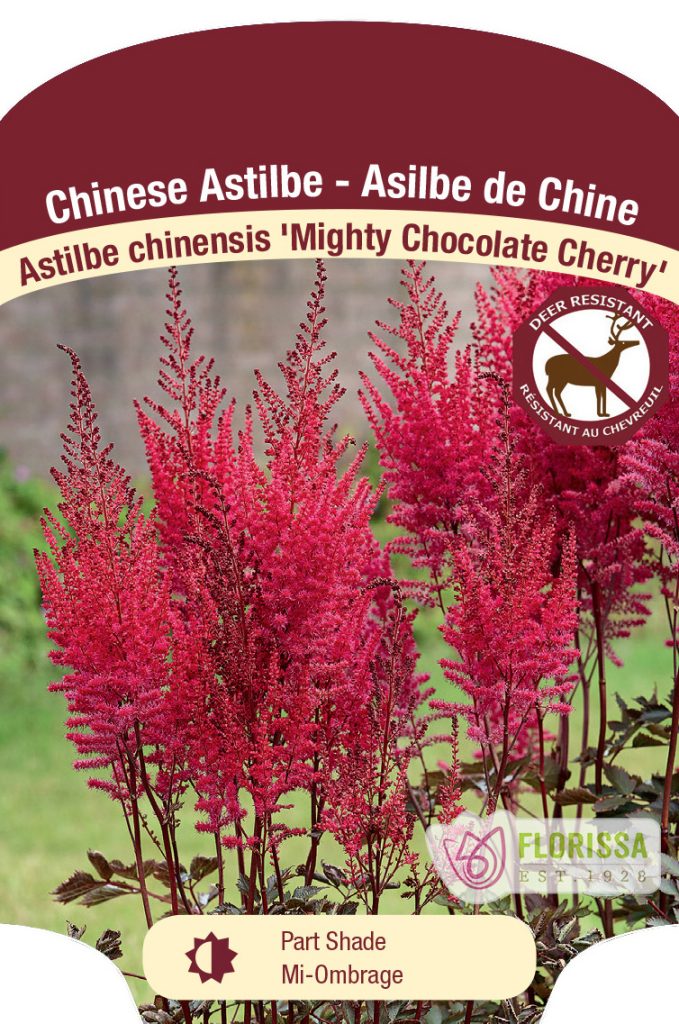
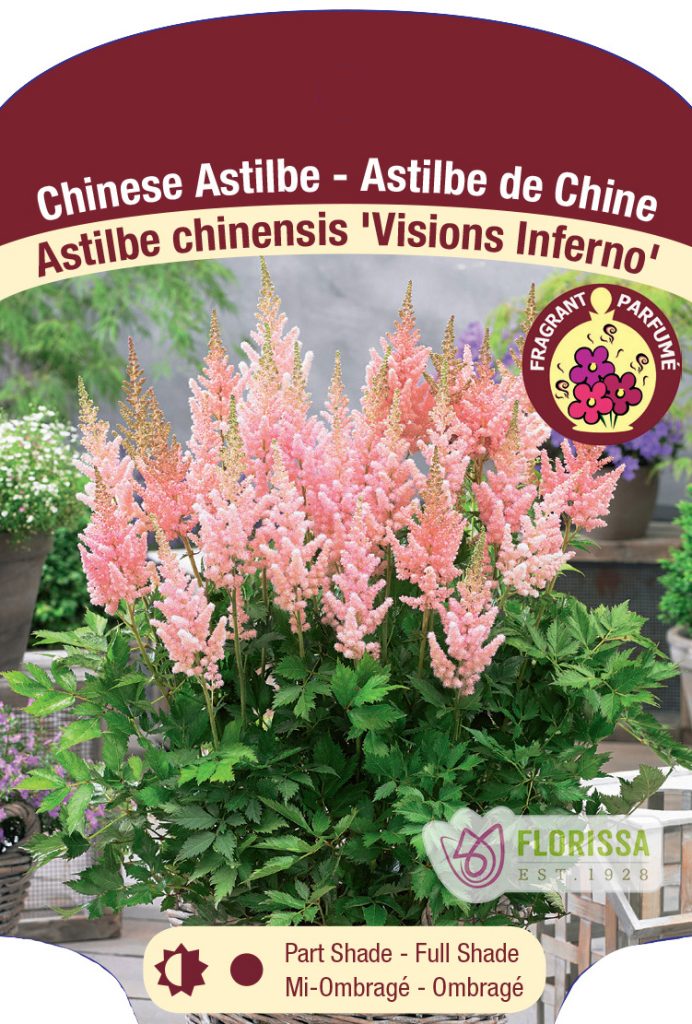
Astilbe chinensis, commonly known as Chinese Astilbe, is a distinguished species within the Astilbe genus, celebrated for its robust growth and striking floral displays. Originating from China, this hardy perennial is noted for its adaptability to a range of garden conditions, including dry and less fertile soils, which sets it apart from many of its counterparts. The Chinese Astilbe produces dense, pyramidal flower plumes in shades of pink, purple, and white, typically blooming from mid to late summer. Its attractive, coarsely textured foliage adds visual interest even when the plant is not in bloom. Astilbe chinensis is particularly valued for its ability to thrive in sunny locations, provided it receives adequate moisture. This makes it a versatile choice for adding colour and texture to shaded woodlands, cottage gardens and large containers. A few of our favourite varieties include: Fireworks Pink, Mighty Chocolate Cherry, and Visions Inferno.
Astilbe japonica
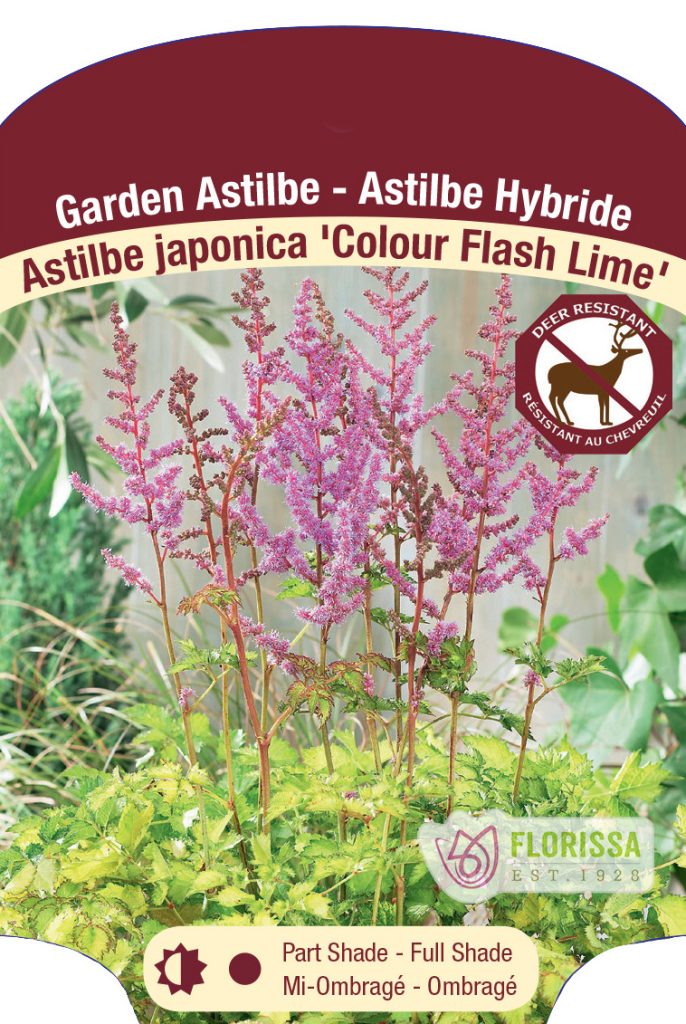
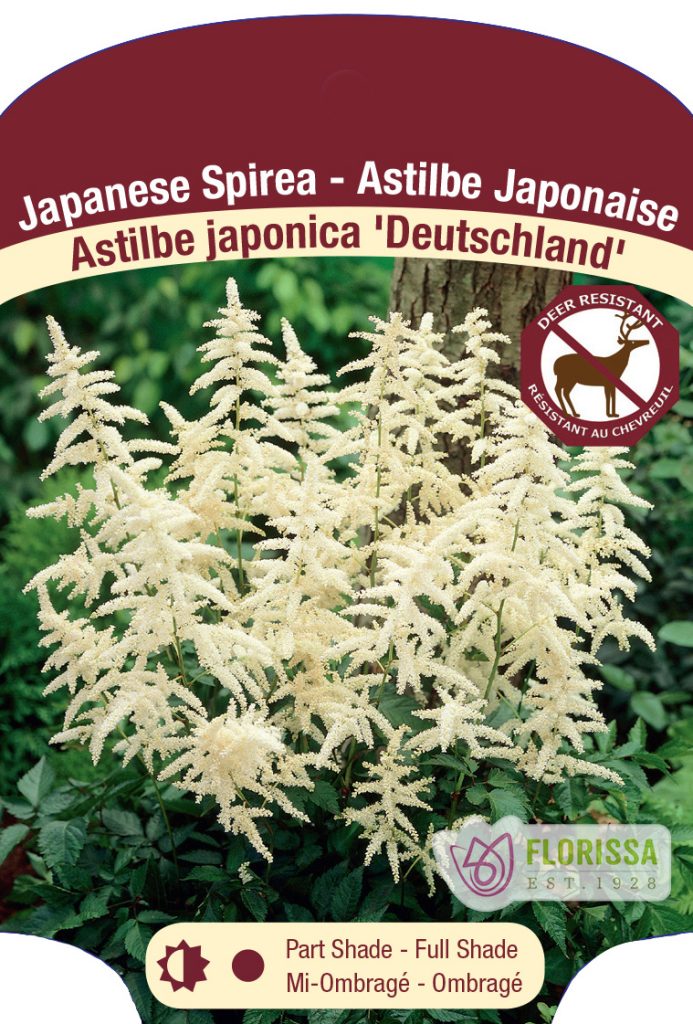
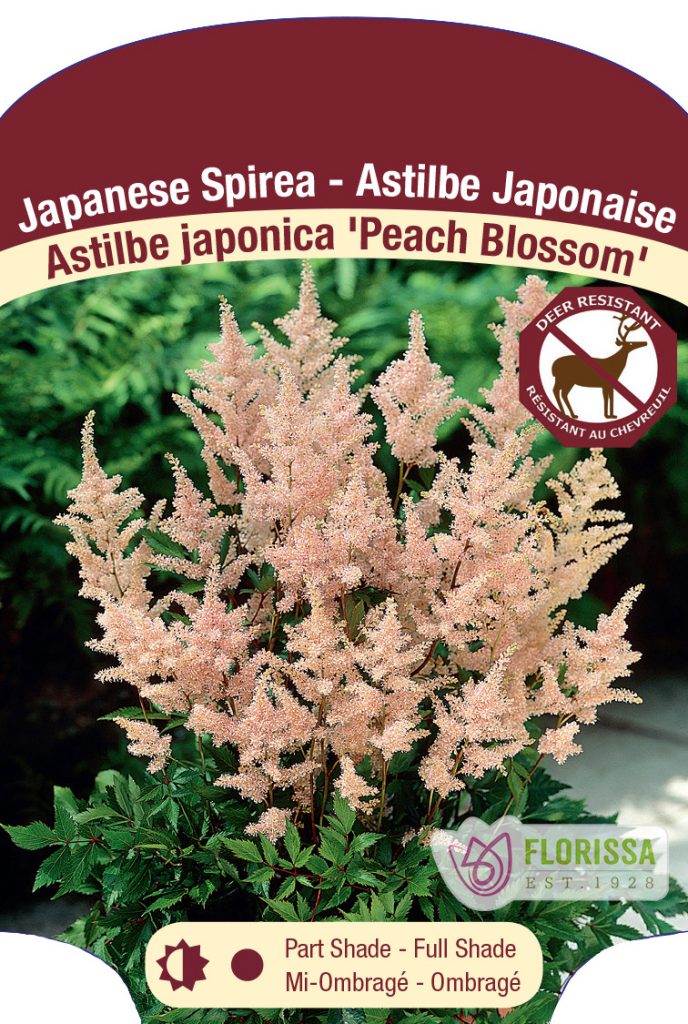
Astilbe japonica, commonly known as Japanese astilbe, is a striking perennial that brings a touch of elegance and vibrant colour to garden landscapes. Native to Japan, this species is particularly cherished for its finely divided, glossy green foliage and its dense, upright flower plumes that appear in shades of white, pink, and red. Blooming in early to mid-summer, Astilbe japonica adds a dramatic flair to shaded and partially shaded areas, thriving best in consistently moist, well-drained soils. Its flowers, which can last for several weeks, attract pollinators, adding ecological value to its ornamental appeal. Japanese Astilbe is also known for its low maintenance requirements and resistance to common pests and diseases. This makes it an ideal choice for when looking to improve your landscape with minimal effort. Whether used in borders, woodland gardens, or as a striking focal point, Astilbe japonica stands out as a versatile and enduring favourite among shade-loving plants. A few of our favourite varieties include : Colour Flash Lime, Deutschland, and Peach Blossom.
Astilbe simplicifolia
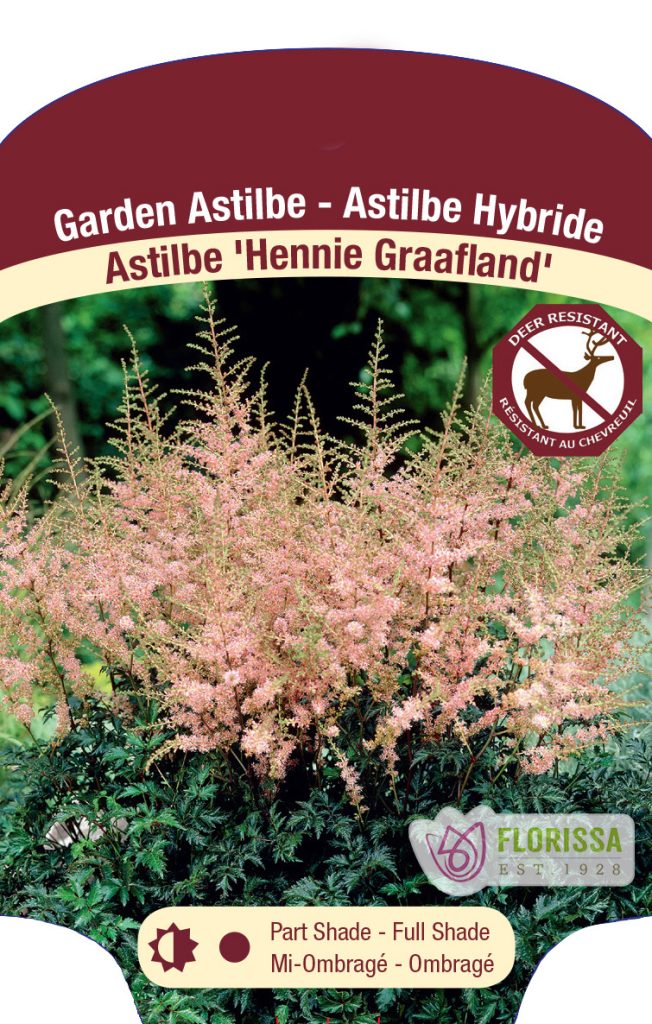
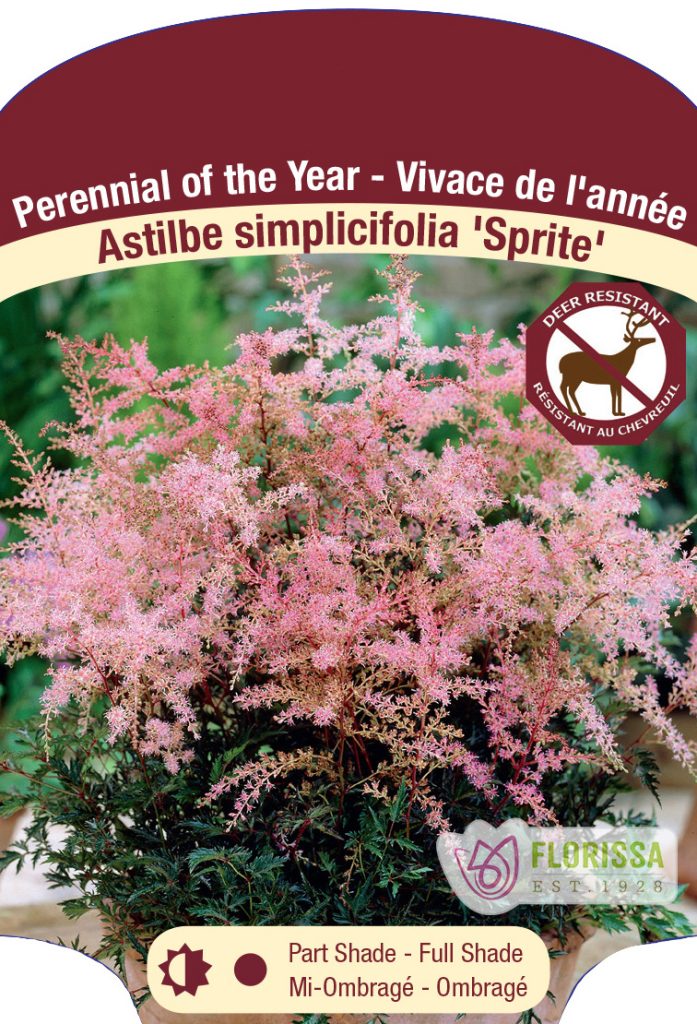
Astilbe simplicifolia, often referred to as the “single-leaf astilbe,” is a unique and delicate species within the Astilbe genus, admired for its refined beauty and graceful form. This species is distinguished by its simpler, less divided foliage compared to other Astilbes, which lends a sleek and elegant appearance to the plant. Blooming in early to mid-summer, Astilbe simplicifolia produces airy, feathery flower plumes in shades of white, pink, and sometimes pale lavender. These blooms rise above the foliage on slender stems, creating a soft, ethereal effect in garden settings. Ideal for shaded to partially shaded locations, Astilbe simplicifolia thrives in moist, well-drained soils, making it perfect for woodland gardens, shaded borders, and along water features. add a touch of subtle elegance to their landscapes. A few of our favourite varieties include: Hennie Graafland and Sprite.
Astilbe thunbergii
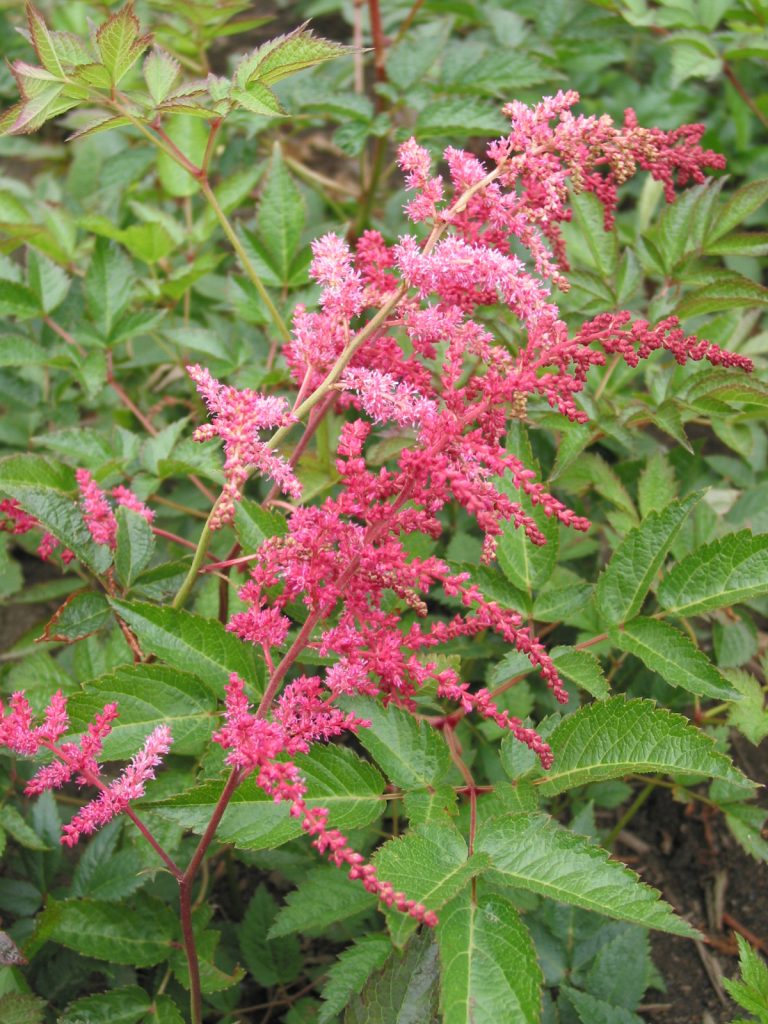
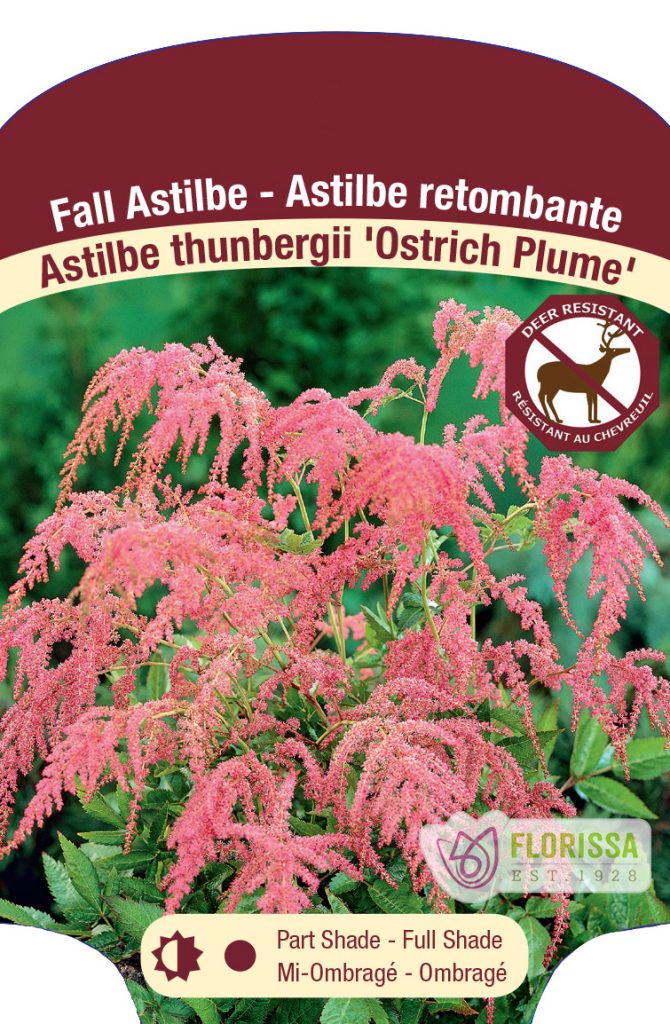
Astilbe thunbergii, a distinguished member of the Astilbe family, is celebrated for its tall, graceful flower spikes and robust growth habit. Originating from East Asia, this species is particularly noted for its late summer blooms, which extend the flowering season of astilbes. The flower plumes of Astilbe thunbergii are typically creamy white or soft pink, creating a delicate contrast against its lush, deeply cut green foliage. These blooms, rising on tall and sturdy stems, bring an airy, elegant feel to shaded and partially shaded garden areas. Preferring moist, well-drained soils, Astilbe thunbergii is well-suited for woodland gardens, borders, and water margins, where its late-season flowers provide a valuable source of nectar for pollinators. Our favourite variety is Ostrich Plume.
Planting and Growing Astilbe
When planting Astilbes, timing and site selection are key to ensuring vibrant growth and flourishing blooms. It’s best to plant these perennials in the spring or early fall, allowing them time to establish their roots before the hot weather of summer or frosts of winter set in. Choose a location that provides partial to full shade. Astilbes thrive in cooler environments and with their finely cut foliage hot direct sunlight can dry them out quickly. Prepare the soil by amending it with organic matter, such as compost, to improve drainage and moisture retention, ensuring it is consistently moist but not waterlogged.
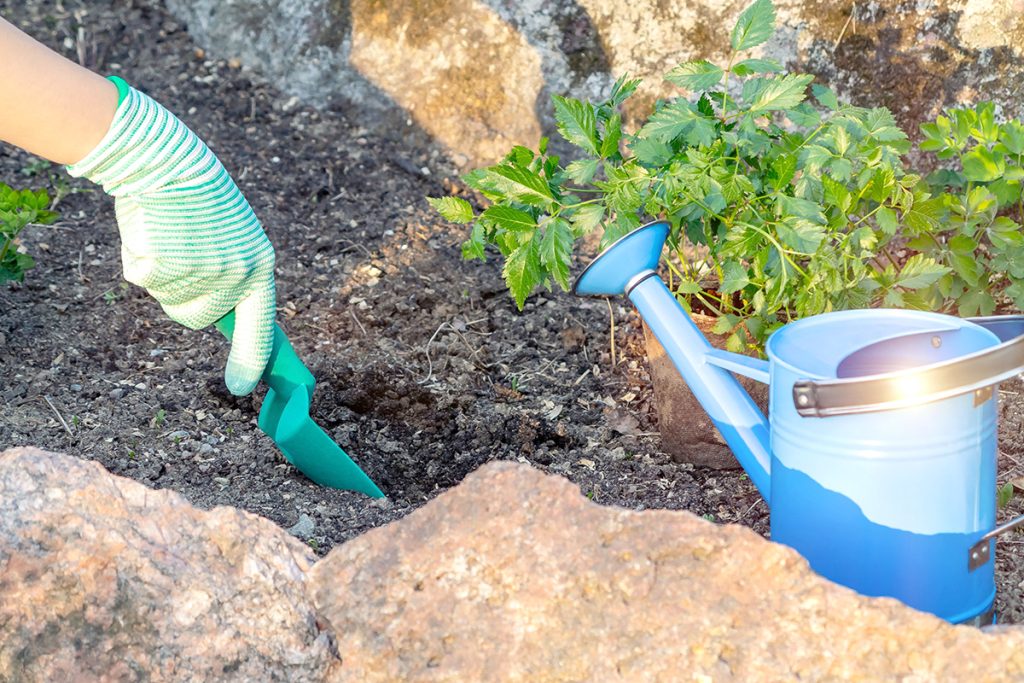
When planting, space the Astilbe clumps about 45 -60 cm (18 to 24”) apart to allow for their natural spread and air circulation. Loosen the soil to 20 cm (8” deep) to allow the developing roots space to explore. Place the root 2.5 cm (1”) deep in the hole with the growing eyes pointing to the sky and top up the soil to ground level. If planting a container-grown specimen, match the planting depth to the soil level of the container, and remember to loosen any root-bound growth. After planting, water the new additions thoroughly and provide a layer of mulch to help retain soil moisture and suppress weeds. Astilbes appreciate consistent watering, as they are getting established and during dry spells, so be diligent in checking soil moisture levels. With a bit of attention and care, as astilbes are getting established, these stunning perennials will reward you with breathtaking blooms for years to come.
Seasonal Care
Seasonal care for Astilbes in your garden ensures these perennial beauties thrive and provide vibrant displays year after year. In early spring, as new growth begins, apply a slow-release balanced fertilizer to encourage robust foliage and abundant blooms. Mulching around the base helps retain moisture and hold off weeds, which is crucial since Astilbes prefer consistently moist soils. During the growing season, regular watering is essential, particularly during dry spells, to maintain soil moisture. As blooms fade in late summer, deadheading spent flowers can improve the plant’s appearance, though it is not necessary for future blooming. In the fall, once the foliage has turned yellow and dried back, cut the stems to ground level. Adding a layer of mulch or compost in late fall can protect the roots from winter frost. By following these seasonal care practices, your astilbes will grow and thrive and continue to enhance your garden with their stunning floral displays.
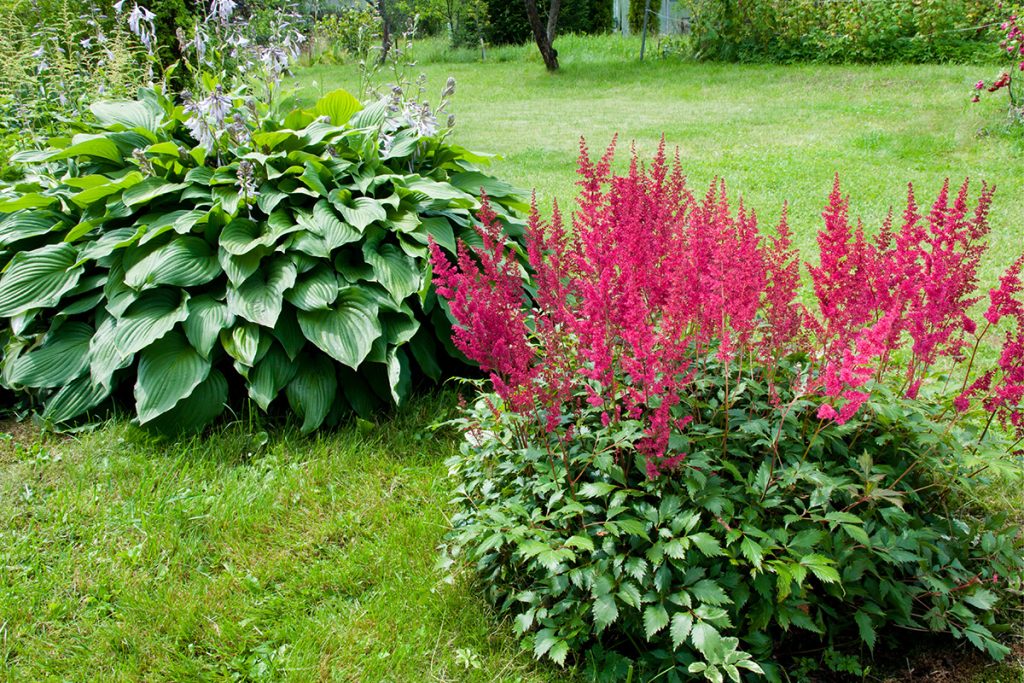
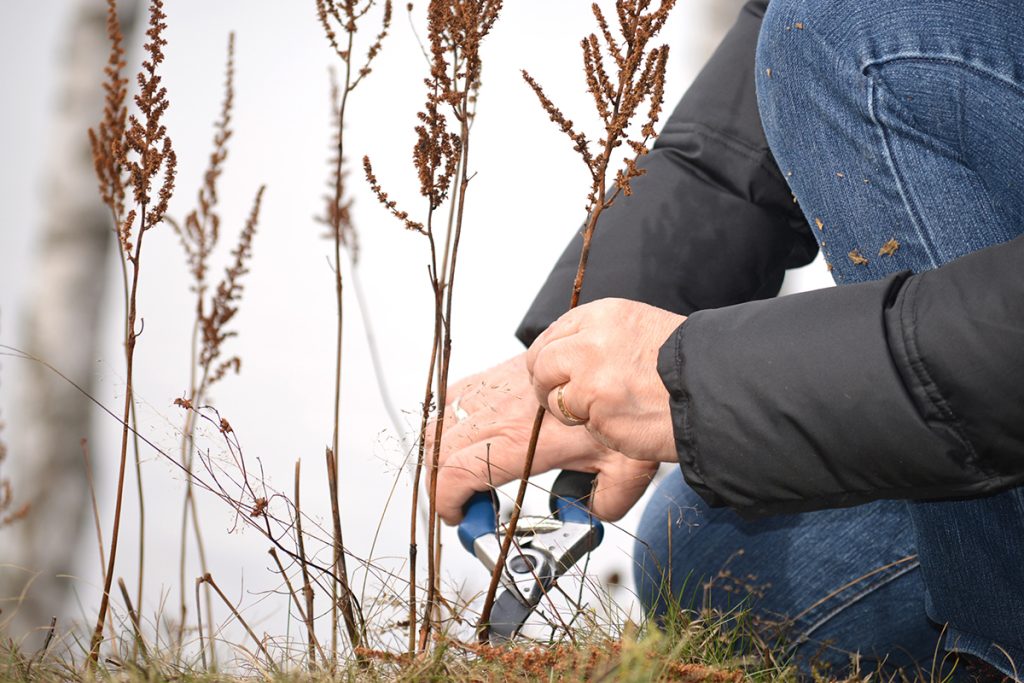
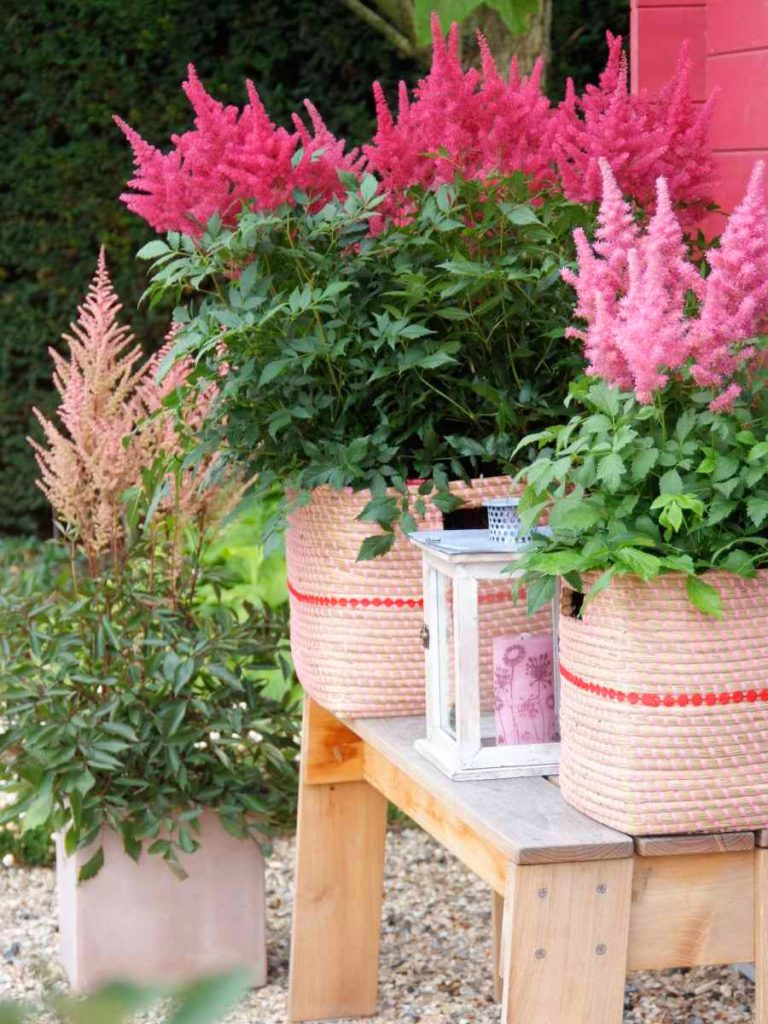
Cut Flower Astilbes
Astilbes are an excellent choice for cut flowers, offering delicate, feathery plumes that add texture and elegance to floral arrangements. Their long-lasting blooms come in a range of colors, including shades of pink, red, white, and lavender, making them versatile for various designs. Astilbes also have sturdy stems and retain their vibrant appearance for several days in a vase, making them a popular choice for both professional florists and home gardeners looking to create stunning bouquets.
Feeling inspired? Go ahead add these easy to grow and elegant perennials to your flower beds, borders and containers to bring colour and texture. Check out how you can add them into your garden for different purposes: Deer Resistant Gardens, Dried Flower Bouquets, Perennial Bouquets, and Small Garden Spaces.



Patricia
Excellent reference.